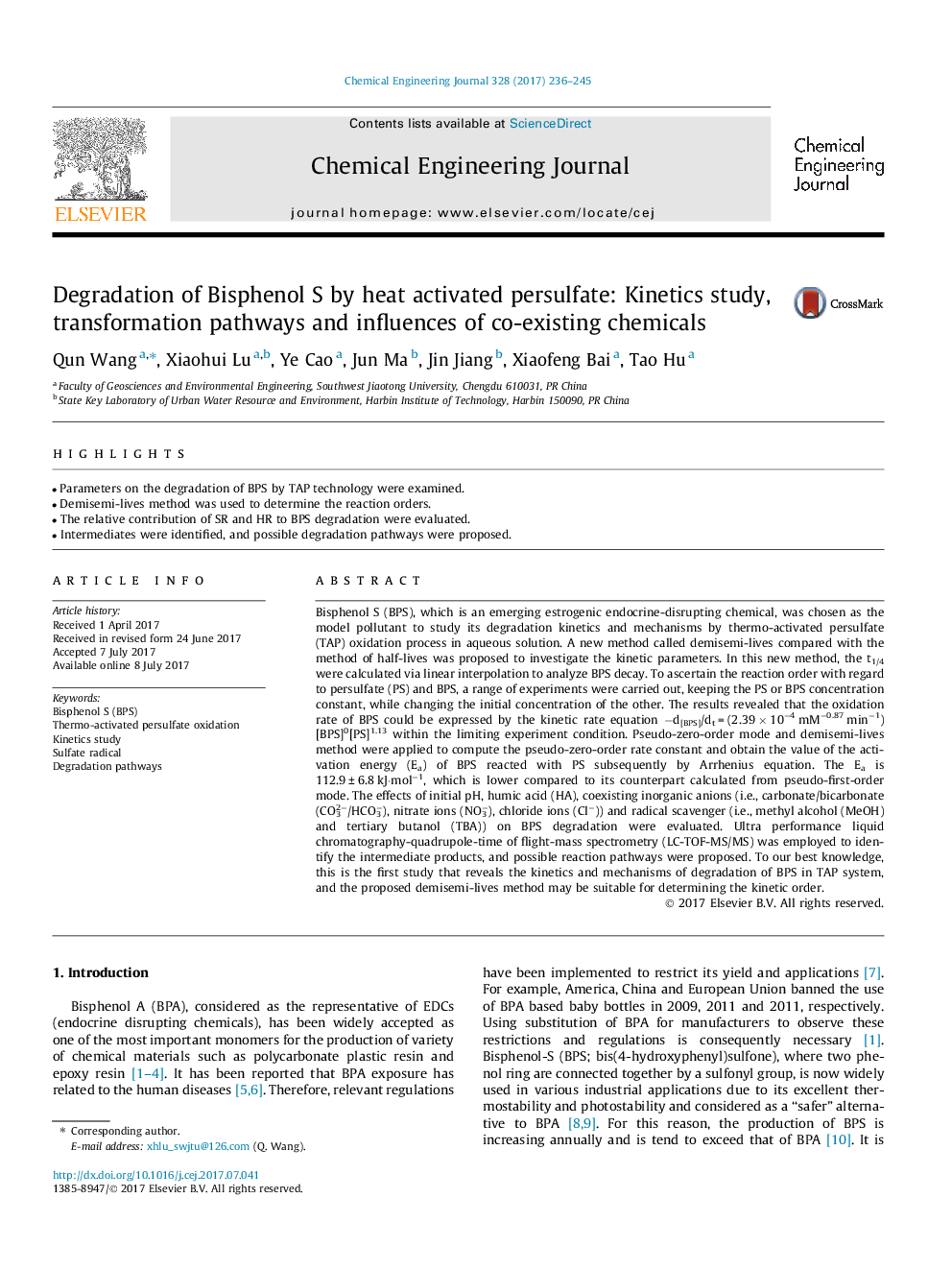| کد مقاله | کد نشریه | سال انتشار | مقاله انگلیسی | نسخه تمام متن |
|---|---|---|---|---|
| 6465227 | 1422950 | 2017 | 10 صفحه PDF | دانلود رایگان |

- Parameters on the degradation of BPS by TAP technology were examined.
- Demisemi-lives method was used to determine the reaction orders.
- The relative contribution of SR and HR to BPS degradation were evaluated.
- Intermediates were identified, and possible degradation pathways were proposed.
Bisphenol S (BPS), which is an emerging estrogenic endocrine-disrupting chemical, was chosen as the model pollutant to study its degradation kinetics and mechanisms by thermo-activated persulfate (TAP) oxidation process in aqueous solution. A new method called demisemi-lives compared with the method of half-lives was proposed to investigate the kinetic parameters. In this new method, the t1/4 were calculated via linear interpolation to analyze BPS decay. To ascertain the reaction order with regard to persulfate (PS) and BPS, a range of experiments were carried out, keeping the PS or BPS concentration constant, while changing the initial concentration of the other. The results revealed that the oxidation rate of BPS could be expressed by the kinetic rate equation âd[BPS]/dt = (2.39 Ã 10â4 mMâ0.87 minâ1)[BPS]0[PS]1.13 within the limiting experiment condition. Pseudo-zero-order mode and demisemi-lives method were applied to compute the pseudo-zero-order rate constant and obtain the value of the activation energy (Ea) of BPS reacted with PS subsequently by Arrhenius equation. The Ea is 112.9 ± 6.8 kJ·molâ1, which is lower compared to its counterpart calculated from pseudo-first-order mode. The effects of initial pH, humic acid (HA), coexisting inorganic anions (i.e., carbonate/bicarbonate (CO32â/HCO3â), nitrate ions (NO3â), chloride ions (Clâ)) and radical scavenger (i.e., methyl alcohol (MeOH) and tertiary butanol (TBA)) on BPS degradation were evaluated. Ultra performance liquid chromatography-quadrupole-time of flight-mass spectrometry (LC-TOF-MS/MS) was employed to identify the intermediate products, and possible reaction pathways were proposed. To our best knowledge, this is the first study that reveals the kinetics and mechanisms of degradation of BPS in TAP system, and the proposed demisemi-lives method may be suitable for determining the kinetic order.
Journal: Chemical Engineering Journal - Volume 328, 15 November 2017, Pages 236-245